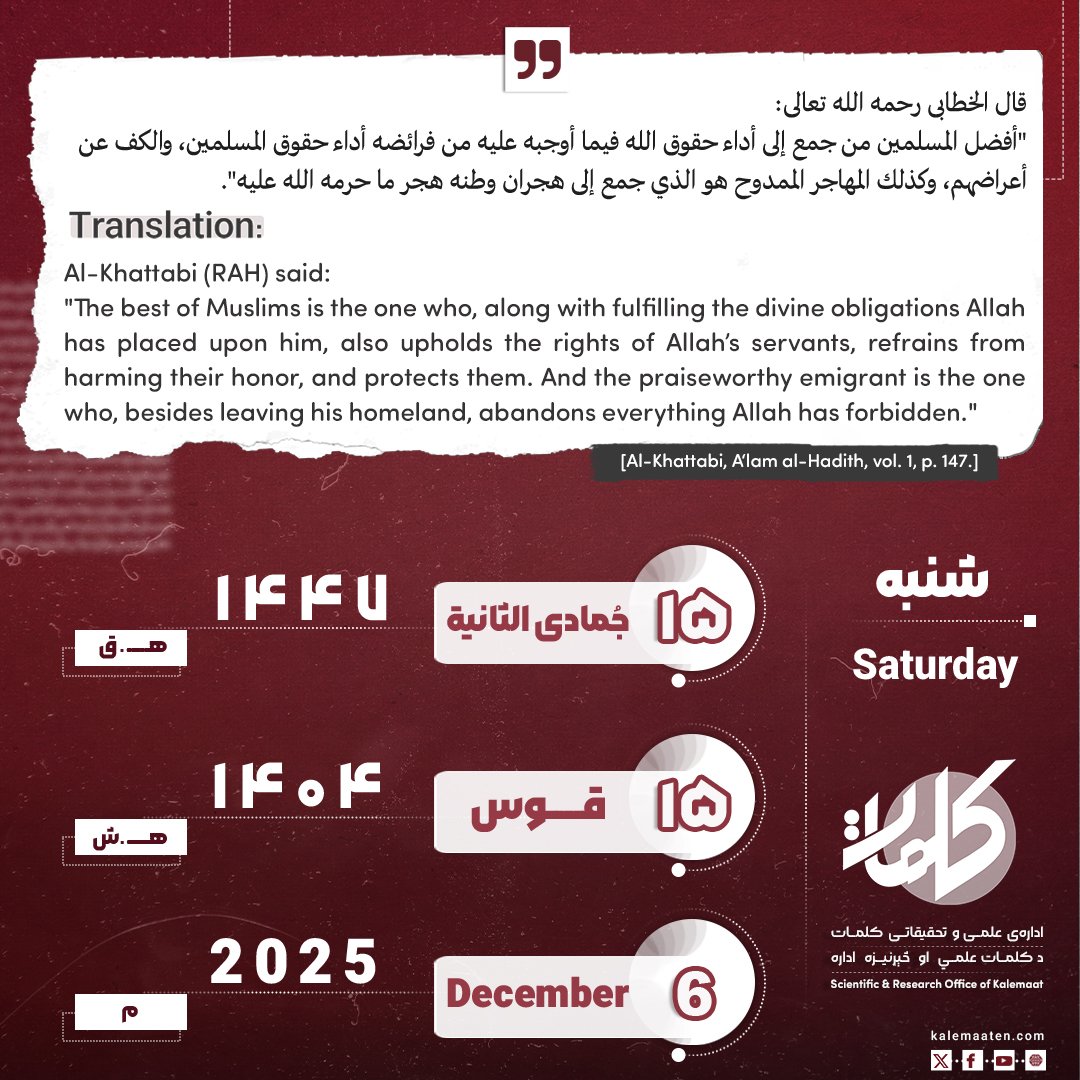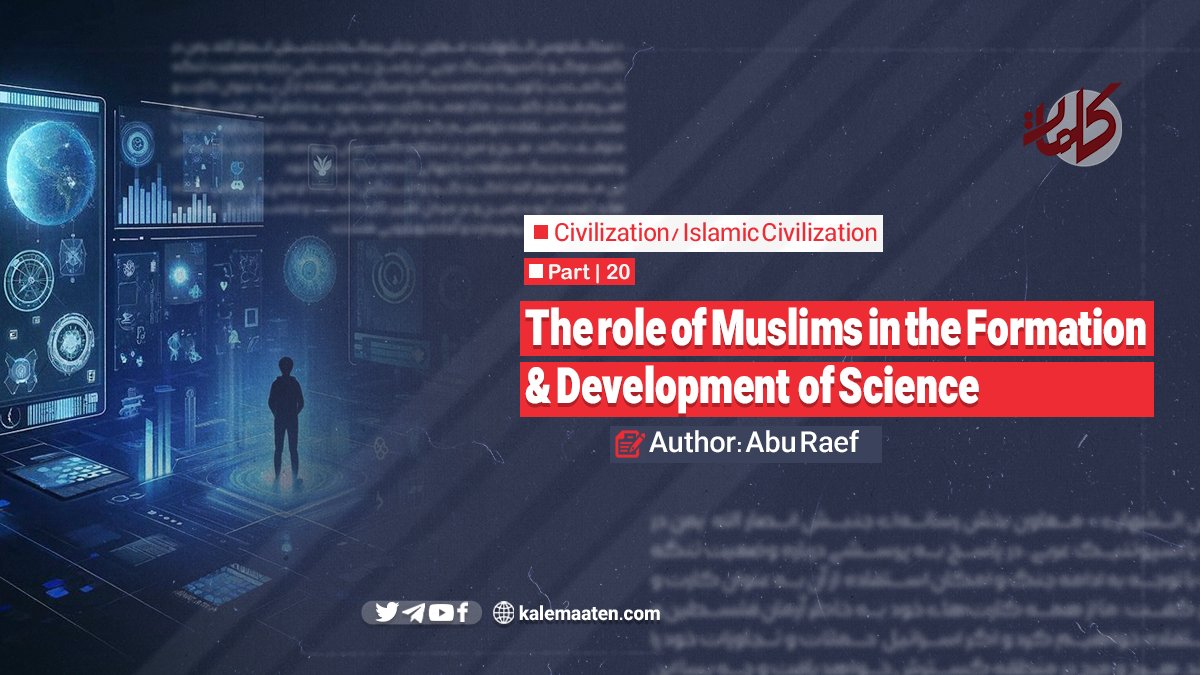Author: Abu Raef
The Role of Muslims in the Formation and Development of Sciences (Part 20)
The System of Hospitals in Islamic History
One of the proud achievements of Islamic history is the existence of large and significant medical centers, commonly known as hospitals. These centers were sometimes stationary and at other times mobile, providing services to patients across various regions. It can be said that “this is one of the most important contributions of Muslims to the global medical system, as the establishment of these hospitals greatly facilitated patient care and was active and effective in treating diseases.”
The first Islamic hospital was established during the caliphate of the Umayyad Caliph, Walid ibn Abd al-Malik. This hospital was specifically for treating leprosy and other skin diseases. After this phase, various hospitals were established across the Islamic world, with some gaining significant prestige to the extent that they became centers of medical science and research, serving as the foundation for the establishment of other hospitals worldwide. The first hospital in the West was established in Paris, France, nine centuries after these hospitals were founded.
These hospitals were sometimes mobile, carried on the backs of more than forty camels, traveling to different regions of the Islamic empire and carrying with them various medical instruments, accompanied by Islamic doctors.
The author of “History of Science among the Arabs” writes: “The mobile hospital was equipped with medicine and food and was regularly sent to remote corners of the Islamic world or dispatched during emergencies. They were also sent to prisons. The first person to organize this was Minister Ali ibn Isa al-Jarrah during the time of Caliph al-Muqtadir, under the command of Sinan ibn Thabit ibn Qurrah. Later, the practice of mobile hospitals expanded, and they would accompany kings and caliphs during their travels. Armies also carried mobile hospitals with them. Sultan Zahir Barquq always had a large mobile hospital with him.”
Permanent Hospitals
The second type of hospitals were those that were permanent and stationary. In fact, the majority of hospitals in the Islamic world were of this type, with Muslims establishing hospitals in various cities and regions. Some of the most significant hospitals established in the Islamic world include:
1. The Hospital of Adhudi in Baghdad: This hospital was established in 371 AH by Adhuddīn ibn Būyah. It housed more than twenty-four doctors who treated patients. Additionally, it had a large library, and many staff and servants worked there.
2. The Great Nurī Hospital in Damascus: Established in 549 AH by the just king Nur al-Dīn Mahmūd Zankī, this hospital was one of the largest and most prominent in Islamic history, serving patients for many years. It remained operational until 1317 AH, functioning for more than eight hundred years.
3. The Great Mansuri Hospital in Cairo: Established in 683 AH by Sultan Mansūr Sīf al-Dīn Qalāwūn in Cairo, this hospital was a model of precision, order, and cleanliness. It was so large and spacious that it could treat over four thousand patients in a single day.
4. The Hospital in Marrakesh: One of the most remarkable and exemplary hospitals, it was built by al-Mansur Abū Yūsuf Ya’qūb around 580 AH to 595 AH. Its structure was a symbol of perfection and beauty, with gardens planted with various types of trees, four small artificial lakes, and high-quality medical facilities and skilled physicians. This hospital was a true symbol of pride for the Islamic world.
Other notable hospitals in the Islamic world included Zaqāq Qanādīl, al-Mu’āfar, al-‘Atīq Hospital, al-Asfal Hospital, al-Qashāshīn Hospital, al-Saqṭīn Hospital, al-Naṣirī or Ṣalāḥī Hospital, and al-Iskandarī Hospital, all located in Egypt.
In Iraq and the Jazira region, hospitals such as “al-Rashīd” (established by the Abbasid Caliph Harun al-Rashīd), “al-Barāmikah” (where Ibn Dahni worked as a physician), and the hospital of Abī al-Ḥasan ‘Alī ibn ‘Isā, established in the Harbiyah district of Baghdad, were notable examples.
In the Levant, significant hospitals included the hospital of al-Walīd ibn ‘Abd al-Malik, the first hospital established in the region by the sixth Umayyad Caliph Walid ibn Abd al-Malik, and other notable hospitals in Antioch, Damascus (such as al-Saffir, Bab al-Bareed, and Hama).
In the Two Holy Cities (Haramayn), numerous hospitals existed, including the hospital in Mecca, located near the northern side of the Masjid al-Haram, and the hospital in Medina.
These hospitals catered to a variety of diseases, with sections dedicated to internal diseases, wounds, skin diseases, eye conditions, and bone fractures.
These hospitals were not just places for treatment but also centers for medical education. Every morning, a specialist professor would walk through the hospital to examine patients, accompanied by students in the early stages of medical training. The professor would teach them, correct their observations, and provide prescriptions. The professor would then move to a large hall where students gathered to read medical books. The professor would explain these books, answer questions, and conduct exams at the end of the lessons, granting certificates to those who passed, allowing them to practice medicine.
Continues…
1. What is the path of Muslims to the world? P.: 574.
2. Same source.
3. Farroukh, Umar, Tarikh al-Uloom and Al-Arab, p. 293, third edition, 1980. Dar al-Alam Lamlayin, Beirut, Lebanon.
4. What is the path of Muslims to the world? P.: 577.
5. Beck, Ahmad Eisa, Tarikh al-Bimarstanat fi al-Islam, p.: 186, first edition, 2005, Damascus, Syria.
6. What is the step of the Muslims to the world? P.: 575.



